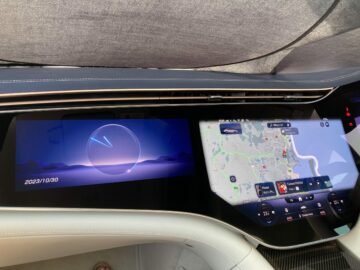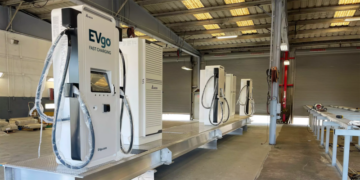South Africa’s electricity rationing program, called load-shedding, seems to be getting worse with no end in sight. Some analysts say load-shedding could be with us for another 10 years. The effects of load-shedding on homes and businesses have been so brutal and the South African Reserve Bank says that during the higher stages of load-shedding, where consumers can experience 12 hours of load-shedding per day, South Africa loses up to R900 million ($50 million) per day.
Eskom’s load-shedding program is structured in Stages, where Eskom sheds a certain quantum of load from the grid to stabilize the grid. So, depending on the severity of the crisis, load-shedding is implemented in stages from Stage 1 to Stage 8, where Stage 1 sheds 1,000 MW of load from the grid and in a Stage 8 scenario, Eskom takes out 8,000 MW of load from the grid. Load-shedding is implemented over 2-hour or 4-hour blocks on a rotational basis depending on the severity of the crises.
Since late last year, there have been over 100 days of continuous load-shedding in South Africa, the longest continuous stretch of load-shedding in the country’s history. The electricity crisis is now so bad that last night in his State of The Nation Address, the President of South Africa, Cyril Ramaphosa, announced that the National Disaster Management Centre has classified the impact of load-shedding as a national disaster. To get a picture of how bad operating in this environment is, we take a look at some recent announcements from some of South Africa’s biggest retailers, which have thousands of sites across the country.
Pick n Pay Group has over 1,900 locations in South Africa. In a trading update this week, the Group said the generation of emergency, localized, electricity supply is a severe cost to the Group. The Group spent an additional R346 million ($19 million) year-on-year on diesel to run generators at stores in the first 10 months of the year, with the costs concentrated over the latter months, and is currently on a run rate of approximately R60 million ($3.35 million) per month, depending on the stage of load-shedding experienced.
In addition to the above, the Group is experiencing increased generator repairs and maintenance costs and some additional food waste costs. This is due to the fact that diesel generator run times have increased significantly with increasing load-shedding. The group adds that all Pick n Pay and Boxer stores have backup power and are operational throughout load-shedding. However, severe load-shedding creates significant challenges. Customer demand is dampened as a result of disruption, inconvenience, and a concern that food may spoil due to interruptions to power at home. The production of food and other goods is disrupted, creating stock challenges. Diesel generators are not designed to run for many hours continuously and suffer breakdowns.
The Shoprite Group, which employs over 145,000 people, has over 2,900 stores and a network of distribution centers across Africa. In South Africa, Shoprite says in just 6 months — from July to December of last year — the Shoprite Group spent an additional R560 million ($31.21 million) on diesel for generators to ensure that its stores could trade without significant interruptions during load-shedding stages. These reports from the two biggest retail chains give us an idea of how bad the situation really is.
Most of these retailers are installing solar PV onsite at sites they own where possible, and where they can come up with some suitable arrangements with landlords. Looking at the vast amounts being spent of diesel and the fact that load-shedding could be with us for the foreseeable future, it could be time to seriously consider the addition of on-site battery storage. The C&I solar sector is well developed in South Africa and is seeing unprecedented demand. Running diesel generators every day for 4 hours or so is a costly exercise. In this scenario, the unit economics of C&I battery storage could be very appealing.
Looking across most of the African continent, back-up diesel generators have been a “permanent” feature in the C&I sector in a lot of African countries. The IEA’s Africa Energy Outlook 2022 report summarizes the scale of backup generator usage on the continent by saying, “In sub‐Saharan Africa alone, such capacity (of back-up generators) amounted to 45 GW in 2021, more than all the renewables‐based generating capacity in the region. Of this, 13 GW is in Nigeria, where 25 terawatt‐hours (TWh) or 40% of the total electricity is auto‐generated by industrial and commercial firms and households using oil products. Improvements in grid reliability would enable utilities to earn more from sales to industrial and commercial clients, which are crucial to their revenue basis, by discouraging auto‐generation and reducing the need for backup generation during blackouts.”
Recent advances in battery storage and the rise of the more affordable and safer cobalt-free LFP battery solutions could finally present a viable opportunity for large scale stationary storage to displace some of these diesel generators in the commercial and industrial sector. There is also a growing fleet of large batteries made using second life batteries repurposed from old electric cars and buses. These types of batteries will lower the costs of stationary storage products, further improving the value proposition allowing them to better compete in locations with frequent power outages such as in South Africa.
Other applications such as peak shaving, energy arbitrage opportunities from charging when tariffs are low and using that energy during more expressive peak times, could also be attractive in places where there is a significant difference between the peak and off-peak tariffs. It’s probably worthwhile now for players in the C&I battery storage space to do a deep dive into the business case of C&I storage in quite a few African countries. Is it time for battery storage to start replacing back-up diesel generators? Is the business case looking compelling now, or how far off are we now? There are several firms in South Africa that are already assembling battery packs for C&I applications. Prolonged load-shedding could present an opportunity for these firms to scale up to support installations in the C&I sector.
Image from The Shoprite Group
- SEO Powered Content & PR Distribution. Get Amplified Today.
- Platoblockchain. Web3 Metaverse Intelligence. Knowledge Amplified. Access Here.
- Source: https://cleantechnica.com/2023/02/10/south-africas-largest-supermarket-chains-spend-millions-on-diesel-to-mitigate-the-impact-of-load-shedding/
- $3
- 000
- 1
- 10
- 100
- 2021
- 2022
- a
- above
- across
- addition
- Additional
- Adds
- advances
- affordable
- africa
- African
- All
- Allowing
- alone
- already
- amounts
- Analysts
- and
- announced
- Announcements
- Another
- appealing
- applications
- approximately
- arbitrage
- arbitrage opportunities
- attractive
- Backup
- backup power
- Bad
- Bank
- basis
- batteries
- battery
- battery storage
- being
- Better
- between
- Biggest
- Blocks
- Buses
- business
- businesses
- called
- Capacity
- cars
- case
- Centers
- centre
- certain
- chains
- challenges
- charging
- classified
- clients
- come
- commercial
- compelling
- compete
- Concentrated
- Concern
- Consider
- Consumers
- continent
- continuous
- continuously
- Cost
- Costs
- could
- countries
- country
- country’s
- creates
- Creating
- crisis
- crucial
- Currently
- customer
- day
- Days
- December
- deep
- deep dive
- Demand
- Depending
- designed
- developed
- diesel
- difference
- disaster
- Disruption
- distribution
- during
- earn
- Economics
- effects
- Electric
- electric cars
- electricity
- electricity supply
- emergency
- employs
- enable
- energy
- ensure
- Environment
- Every
- every day
- Exercise
- experience
- experienced
- experiencing
- expressive
- Feature
- few
- Finally
- firms
- First
- FLEET
- food
- foreseeable
- frequent
- from
- further
- future
- generating
- generation
- generator
- generators
- get
- getting
- Give
- goods
- Grid
- Group
- Growing
- higher
- history
- Home
- Homes
- HOURS
- households
- How
- However
- HTTPS
- idea
- Impact
- implemented
- improvements
- improving
- in
- increased
- increasing
- industrial
- installing
- IT
- July
- large
- largest
- Last
- Last Year
- Late
- Life
- load
- locations
- Look
- looking
- Loses
- Lot
- Low
- made
- maintenance
- management
- many
- million
- millions
- Mitigate
- Month
- months
- more
- most
- nation
- National
- Need
- network
- Nigeria
- night
- Oil
- Old
- operating
- operational
- opportunities
- Opportunity
- Other
- Outages
- Outlook
- own
- Packs
- Pay
- Peak
- People
- pick
- Pick N Pay
- picture
- Places
- plato
- Plato Data Intelligence
- PlatoData
- players
- possible
- power
- present
- president
- probably
- Production
- Products
- Program
- proposition
- Quantum
- Rate
- recent
- reducing
- region
- reliability
- report
- Reports
- Reserve
- reserve bank
- result
- retail
- retailers
- revenue
- Rise
- Run
- running
- safer
- Said
- sales
- says
- Scale
- scenario
- Second
- sector
- seeing
- seems
- several
- severe
- Sight
- significant
- significantly
- Sites
- situation
- So
- solar
- Solutions
- some
- South
- South Africa
- South African
- Space
- spend
- spent
- stabilize
- Stage
- stages
- start
- stock
- storage
- stores
- structured
- such
- suitable
- supply
- support
- Take
- takes
- tariffs
- The
- their
- this week
- thousands
- throughout
- time
- times
- to
- Total
- trade
- Trading
- types
- unit
- unprecedented
- Update
- us
- Usage
- utilities
- value
- Vast
- viable
- Waste
- week
- which
- will
- without
- worthwhile
- would
- year
- years
- youtube
- zephyrnet










